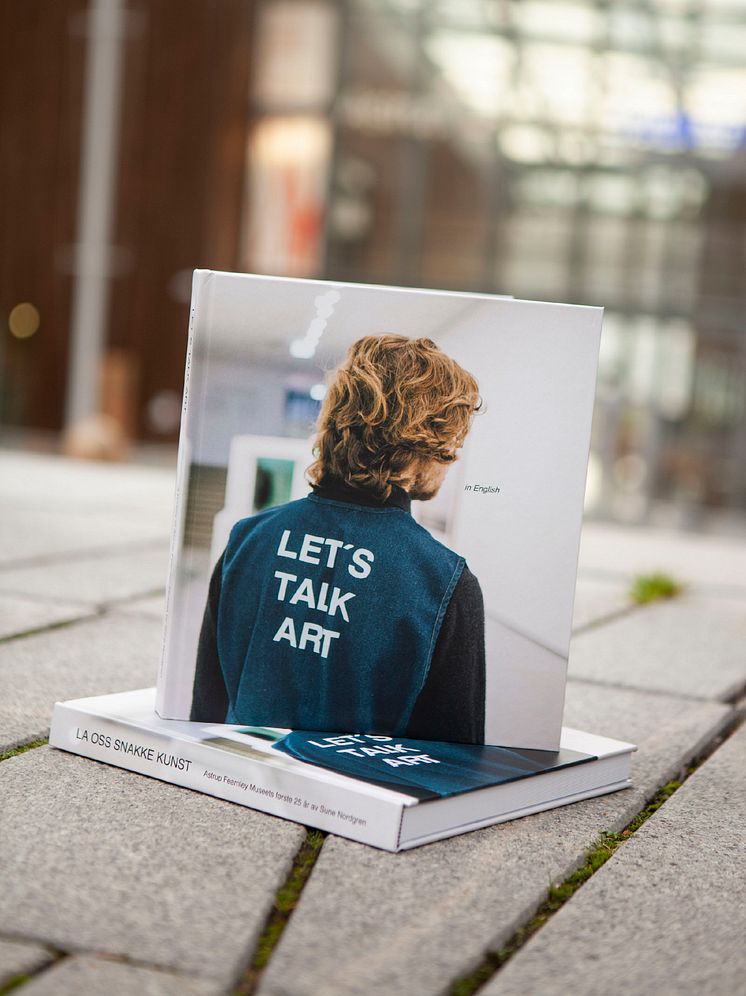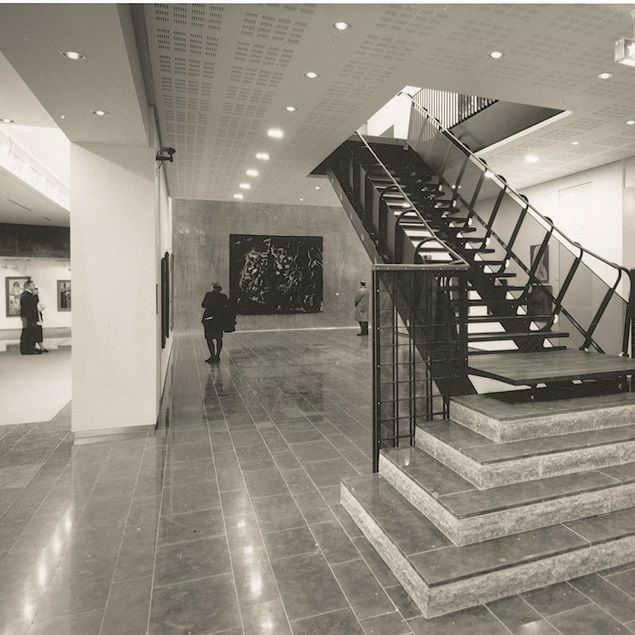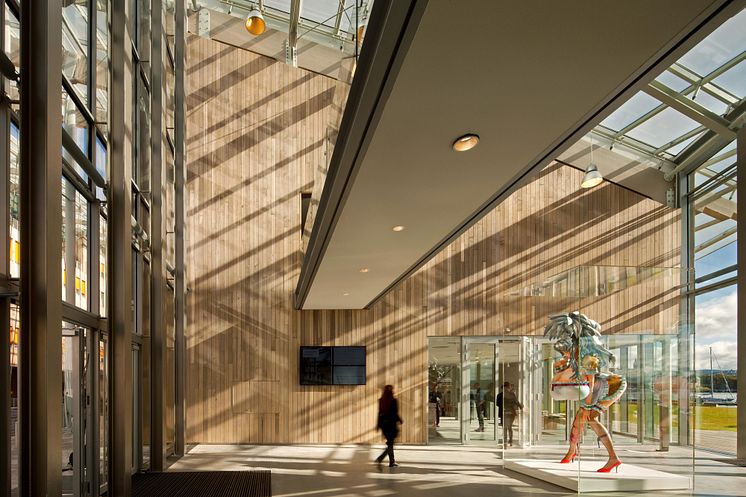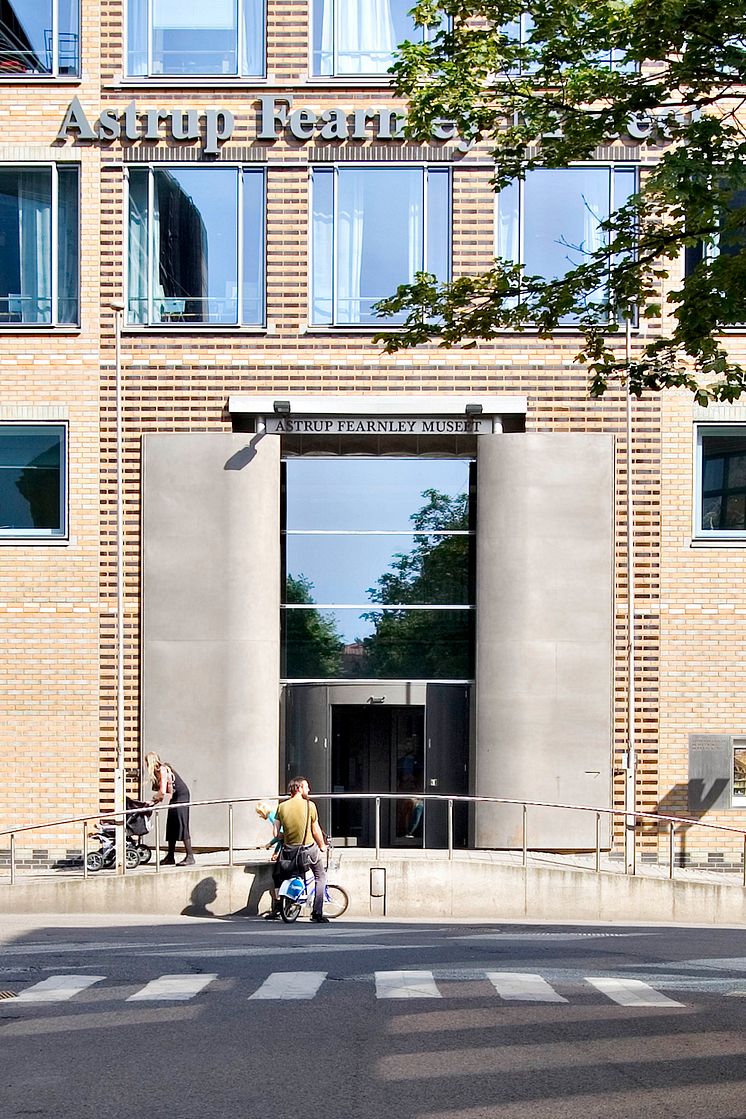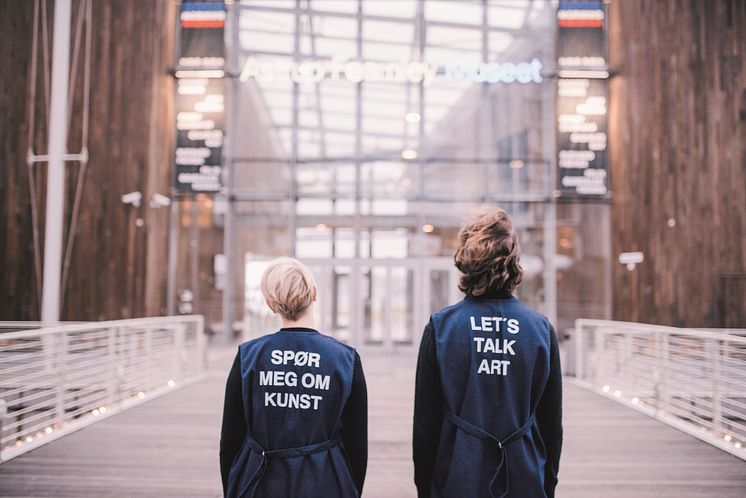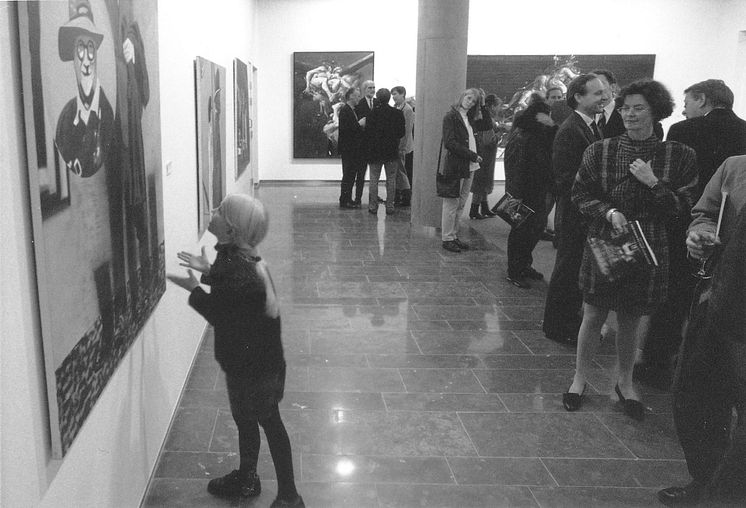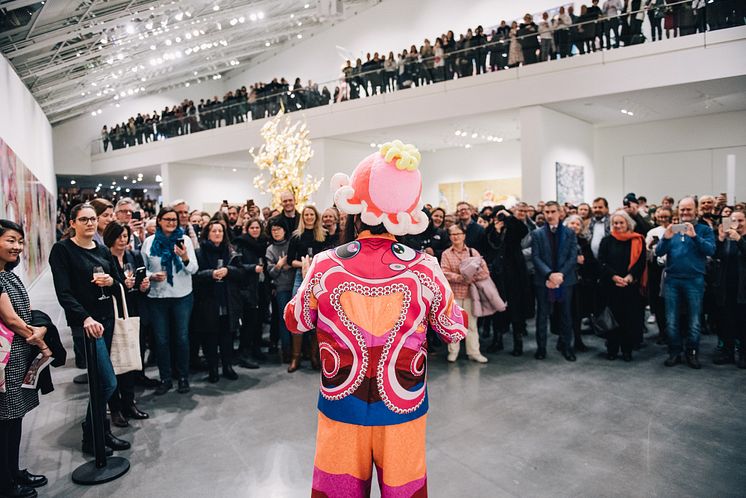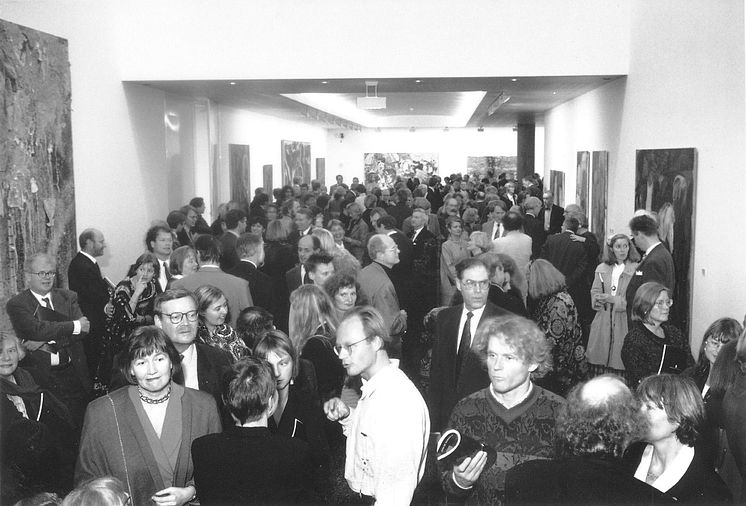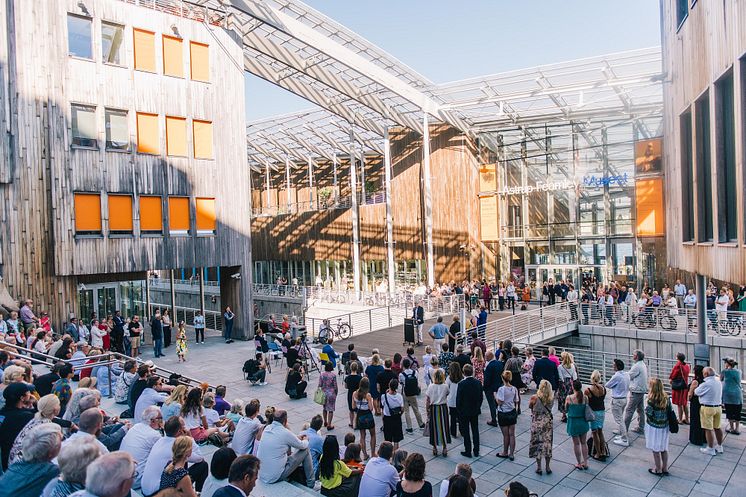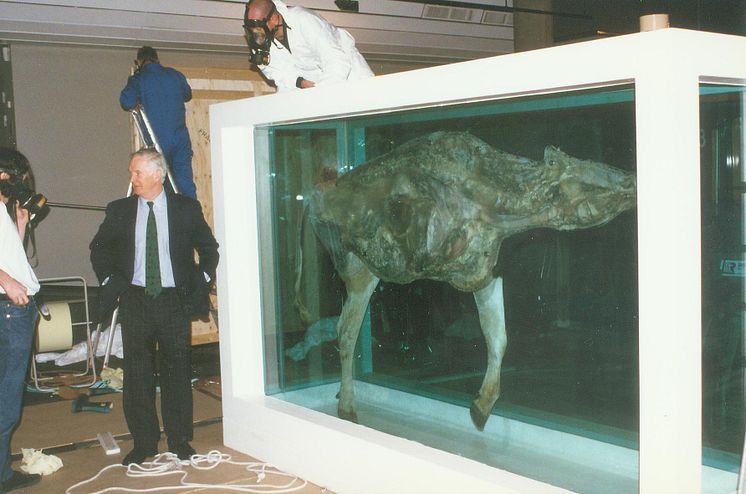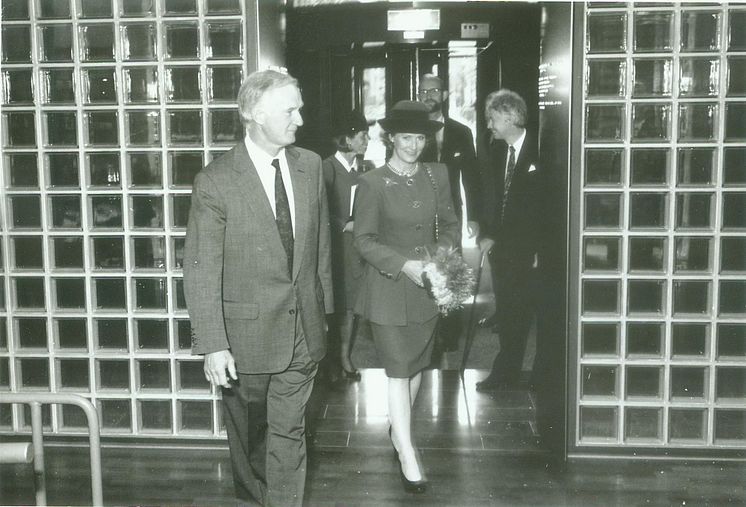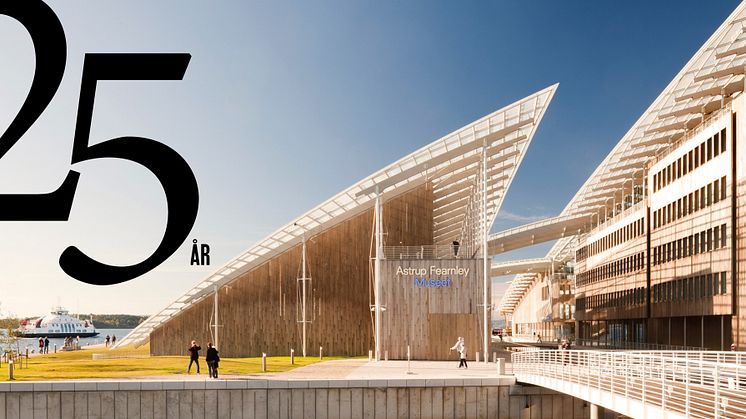
Press release -
25 years of Norwegian and international contemporary art
On 9 October, 1993, Astrup Fearnley Museet opened its doors at Dronningensgate 4, in the Kvadraturen district of Oslo. For 25 years the museum has promoted the internationalisation of the arts in Norway by inviting some of the most prominent actors in the international art community to present their works.
The Astrup and Fearnley families have included accomplished businesspeople and artists for several generations. They have been known as philanthropists with a long tradition of supporting artists and collecting art. On the basis of his family’s Thomas Fearnley, Heddy and Nils Astrup Foundation, Hans Rasmus Astrup established a museum, thus sharing his family’s extensive art collection, as well as his own, with the public.
Norway’s first contemporary art museum, the Museum of Contemporary Art, was opened in the former Norges Bank headquarters at Bankplassen, Oslo, around three years before Astrup Fearnley Museet opened nearby on Dronningensgate. Until then, the Henie Onstad Kunstsenter and Kunstnernes Hus were responsible for the management and presentation of modern and contemporary art in Norway, while private galleries such as Galleri K, Riis, Wang and Haaken played perhaps an even greater role. The focus of the new Astrup Fearnley Museet was not to compete with the existing art institutions but, on the contrary, to supplement and expand the field and to have a positive impact on the public’s interest in contemporary art. At that time Oslo was a city with barely a half-million inhabitants, but it was in a period of strong growth, and interest in new initiatives was intense.
When Queen Sonja formally opened the museum in 1993, she emphasised in her speech that this was “art which had been selected with no government intervention, other than a simple desire to share it with others.”.
Hans Rasmus Astrup is much more daring than many collectors. He has never wavered in the face of artworks that have proved challenging in terms of their handling, care or appropriate placement, presented obstacles such as poisonous formaldehyde and superhuman weight, fragile and importunate installations, religious and sexually challenging motifs, as well as intellectually and physically provocative works by some of the world’s most creative artists.
– Sune Nordgren, in his recently published book Let’s Talk Art. A History of Astrup Fearnley Museet.
The establishment of Astrup Fearnley Museet has promoted the internationalisation of the arts in Norway. Some of the key actors in the international art community have been invited to present their works here, and the museum can look back on an impressive list of exhibitions during its 25 years of existence. Among the international artists that Astrup Fearnley Museet has brought to Oslo are Yoko Ono, Richard Prince,Cindy Sherman,Jeff Koons, Matthew Barney, Damien Hirst, Takashi Murakami and Olafur Eliasson. The museum has also shown major exhibitions of Norwegian artists such as Bjarne Melgaard, Odd Nerdrum, Tom Sandberg, Ann Lislegaard, Jens Johannessen, Marianne Heske, Vibeke Tandberg, Gardar Eide Einarsson and Matias Faldbakken. At the same time the museum has focused heavily on young artists, both Norwegian and international, devoting several exhibitions to identifying and presenting this group, including Lights On (2008), Europe, Europe (2014) and NN-A NN-A NN-A – New Norwegian Abstraction (2015).
As a result of the museum’s broad network of contacts and its ambition to take an active part in the art community in both Norwegian and international contexts, it has been able to collaborate with leading contemporary curators, critics and researchers. Together with internationally recognised experts and art institutions the museum has produced exhibitions that have toured all over the world, including Uncertain States of America (2005), China Power Station (2007), Indian Highway (2009) and Imagine Brazil (2013). Such exhibitions have provided an opportunity to identify and explore contemporary art from other parts of the world and to acquire new works to the Astrup Fearnley Collection.
Throughout its 25 years of existence the museum has made major purchases that have attracted considerable attention from the media, ensuring that some of the world’s most iconic artworks can be found in Oslo. Such as Anselm Kiefer’s The High Priestess/Zweistromland, Damien Hirst’s Mother and Child (Divided) and Jeff Koons’s Michael Jackson and Bubbles.
Since its move to the Tjuvholmen district of Oslo, Astrup Fearnley Museet has grown from a museum with a small but devoted audience into one of the city’s new landmarks. It has emerged as a museum for everyone, both residents of Oslo and visitors from Norway and abroad. The museum acknowledges that among its most crucial tasks today are promoting art and fostering an understanding and appreciation of contemporary art.
In 2020 the new National Museum of Art, Architecture and Design will open at the site of the former Vestbane railway station, between Oslo City Hall and the Aker Brygge complex, thus becoming a close neighbour of Astrup Fearnley Museet. The difference in the identities of the two museums will then acquire real significance, and the complementary nature of the two institutions will become even clearer. Residents of Oslo who are interested in art, along with visitors from Norway and abroad, will be able to enjoy an even broader and more richly flourishing art scene.
Topics
Astrup Fearnley Museet is a private museum of contemporary art and has since its opening in 1993 been one of the most important art institutions in Oslo. The museum moved to Tjuvholmen in 2012, beautifully located by the Oslo Fjord in a building designed by world-renowned architect Renzo Piano. The museum shows changing exhibitions by leading international and Norwegian contemporary art and houses the Astrup Fearnley Collection. The collection is one of Norway’s most important and extensive private art collections, with iconic works by artists like Damien Hirst, Anselm Kiefer and Jeff Koons.

